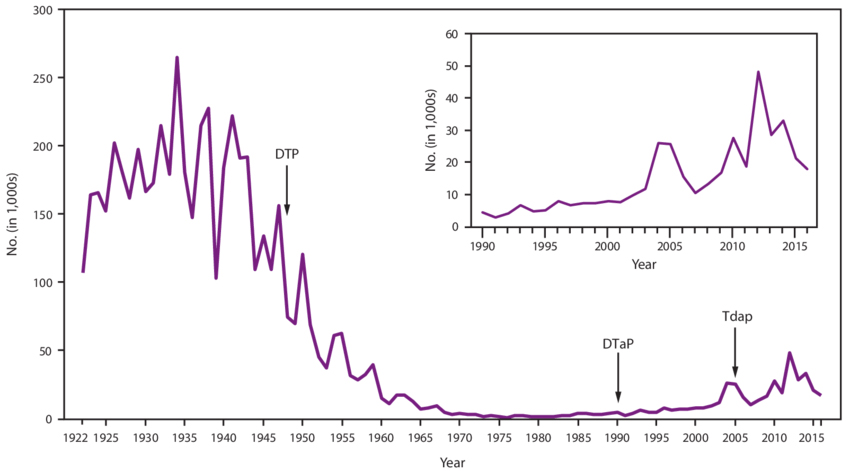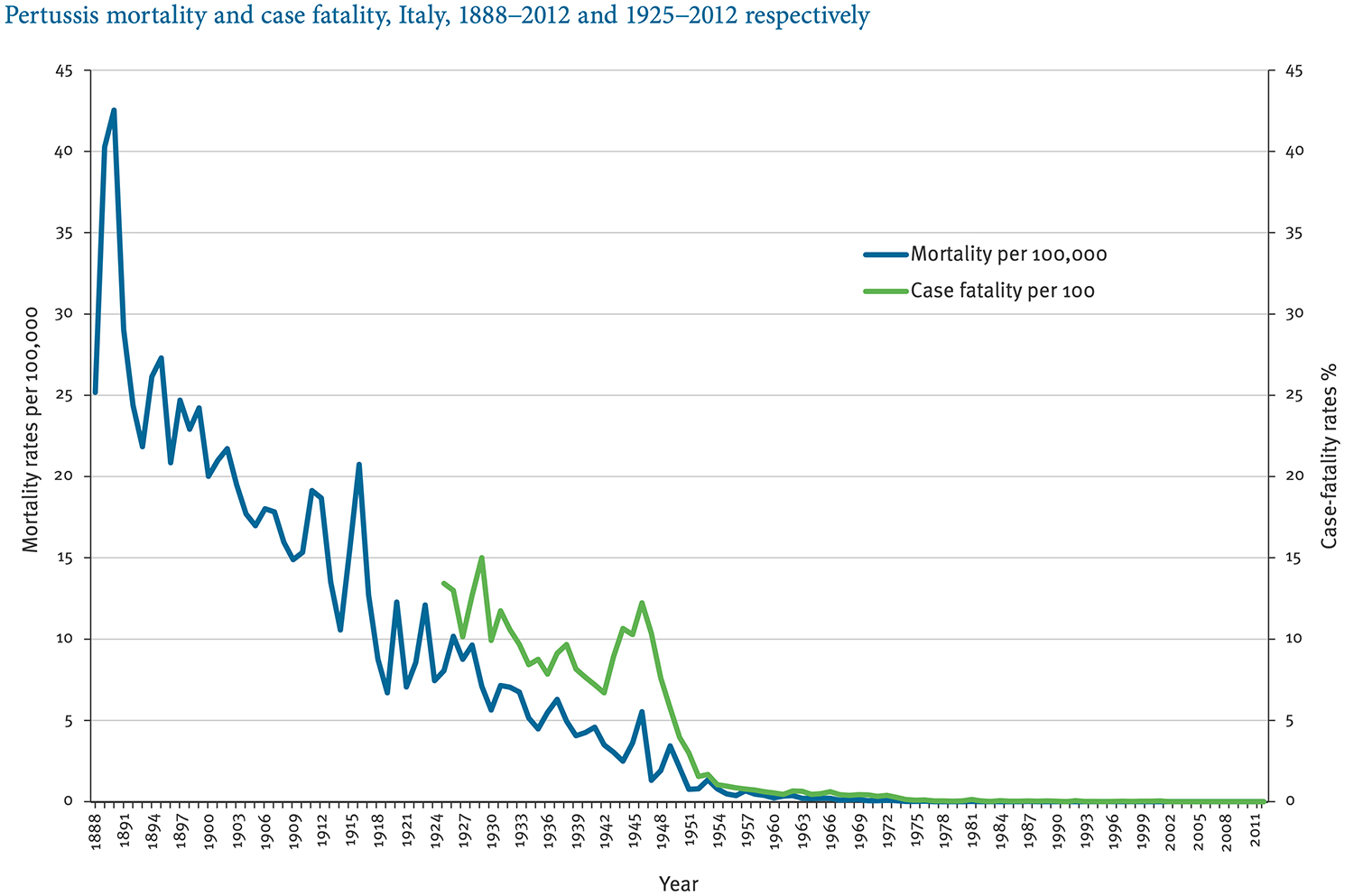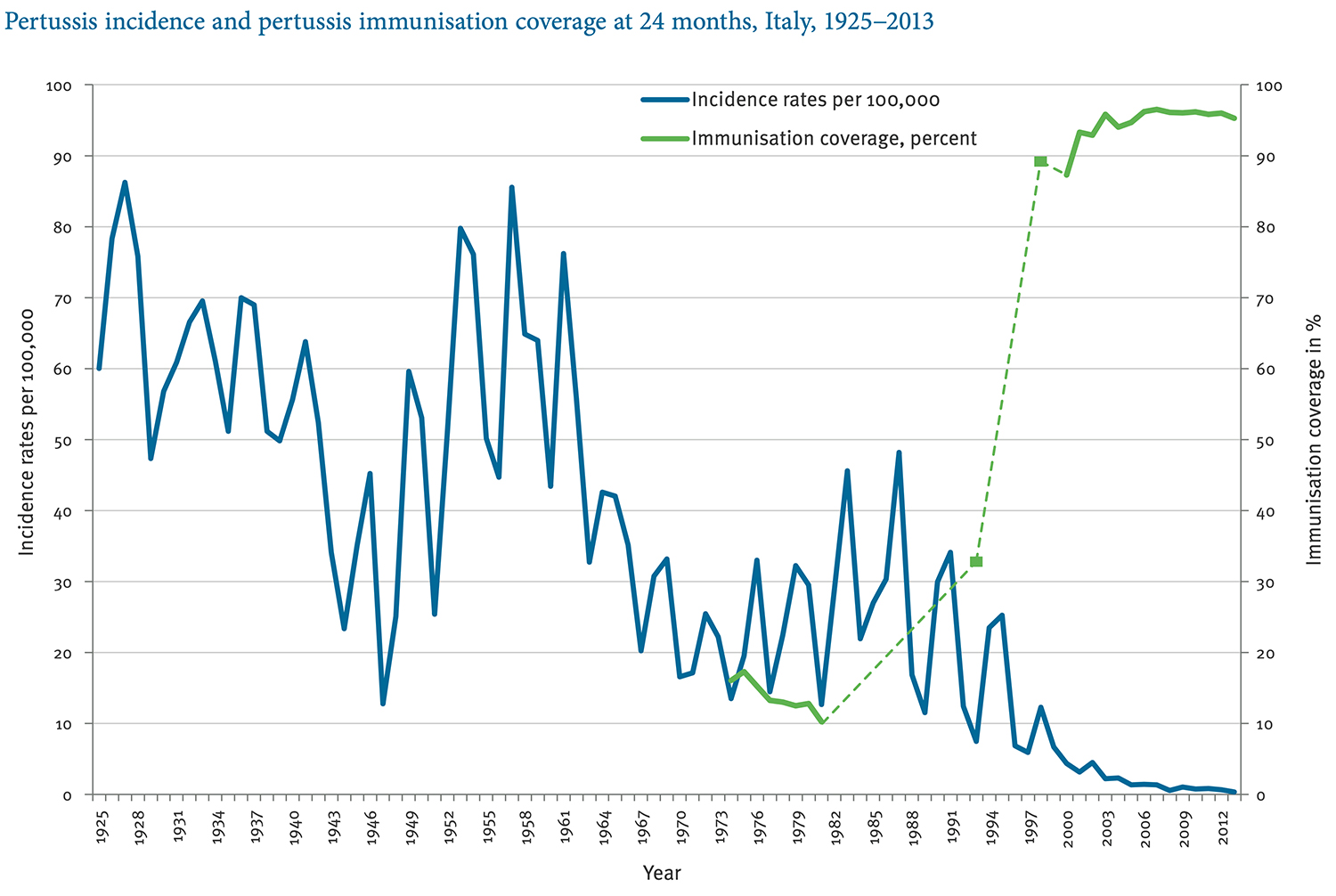What is the epidemiological history of Pertussis?
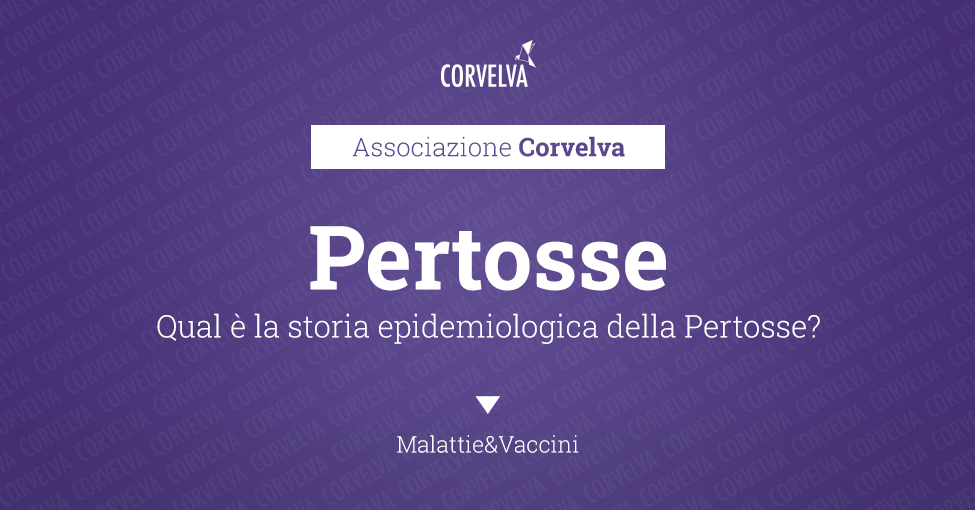
IMPORTANT NOTE: Corvelva invites you to get in-depth information by reading all the sections and links, as well as the manufacturer's product leaflets and technical data sheets, and to speak with one or more trusted professionals before deciding to vaccinate yourself or your child. This information is for informational purposes only and is not intended as medical advice.
Historical data indicate that the incidence and severity of whooping cough had started to decline well before the introduction of the vaccine. From 1900 to 1935, the pertussis death rate in the United States and England had already decreased by itself, by 79% and 82%, respectively.(1)
A study published in the Journal of Pediatrics, in relation to data from Nova Scotia, found that the whole cell vaccine appeared to be only 40-45% effective.(2) despite officially speaking of 63-91% and further evidence indicated that immunity was not maintained and susceptibility to pertussis already reached 95% only a few years after complete immunization.(3-4)
A 2007 study revealed that five years after adolescents received a booster vaccine, pertussis antibody levels were lower than before the booster and undetectable in 28% of subjects.(5)
The problem of vaccine efficacy has been known since 1993 when an epidemic broke out in Ohio with 82% of children receiving multiple doses of the vaccine(6) and the same year, in Alberta, Canada, 62% of those who contracted whooping cough had received "appropriate" doses of the vaccine.(7) In 1996 the same thing happened in Vermont, a state with the highest vaccination coverage in the United States (nearly 97% of all children 19 to 35 months were vaccinated) and in any case 74% of the children had fallen ill.(8)
Things in Europe were no different, in 1996 there was an epidemic in the Netherlands and according to the researchers "our results clearly demonstrate that pertussis remains endemic in the Netherlands, with epidemic peaks, despite the high vaccination coverage" vaccine efficacy had already started, declining in 1994 and 1995 despite vaccination coverage being the highest ever. Experts said there could be "a mismatch between circulating and vaccine strains."(9)
In Cyprus, pertussis vaccination coverage rose from 48% in 1980 to 98% in 2003 and there was a large epidemic and according to experts “most cases were in vaccinated subjects”.(10)
In Israel, pertussis cases increased sixteen-fold between 1998 and 2004 despite "pertussis vaccination coverage remaining stable in children up to 2 years of age over the past decade." Similar situations have been seen in many other countries such as the United States, Canada, Holland and France.(11)
The problem with pertussis vaccines is that they can protect the individual from complications of the disease, albeit for a limited period of time (2 to 5 years).(12 -13) but they do not prevent infection nor do they seem to slow down the circulation of the bacterium. For example, some baboons vaccinated in a 2014 study were found to carry the bacterium itself.(14)
Various studies(15-16) have certified that pertussis strains change as a result of vaccination campaigns, thus allowing the bacterium to continue to spread, especially for new, more virulent strains,
In 2015 the magazine BMC Medicine(17) published a study according to which vaccinated people, even if asymptomatic, are able to spread the disease.
The conclusions of a study published in Vaccine in 2017 are also very clear(18): “Pertussis is not yet under control in some countries and… not even vaccination of pregnant mothers will be able to control whooping cough”
Vaccines: A Guide to Informed Choice by Neil Z. Miller (Author) and Claudia Benatti (Translator)
Terra Nuova Editions, 2018
Now let's take a look at some statistics:
Pertussis trends in the United States
https://www.cdc.gov/pertussis/surv-reporting.html
Epidemiology of pertussis in Italy: Disease trends over the last century
Surveillance and outbreak reports, Gonfiantini et al. 2014 Oct 9;19(40):20921. doi: 10.2807/1560-7917.es2014.19.40.20921.
Immunization and pertussis control in England and Wales, 1957 to 2012: a historical review
Amirthalingam G, Gupta S, Campbell H. Pertussis immunization and control in England and Wales, 1957 to 2012: a historical review. Euro Surveillance. 2013;18(38):pii=20587. Available online: http://www.eurosurveillance.org/ViewArticle.aspx?ArticleId=20587
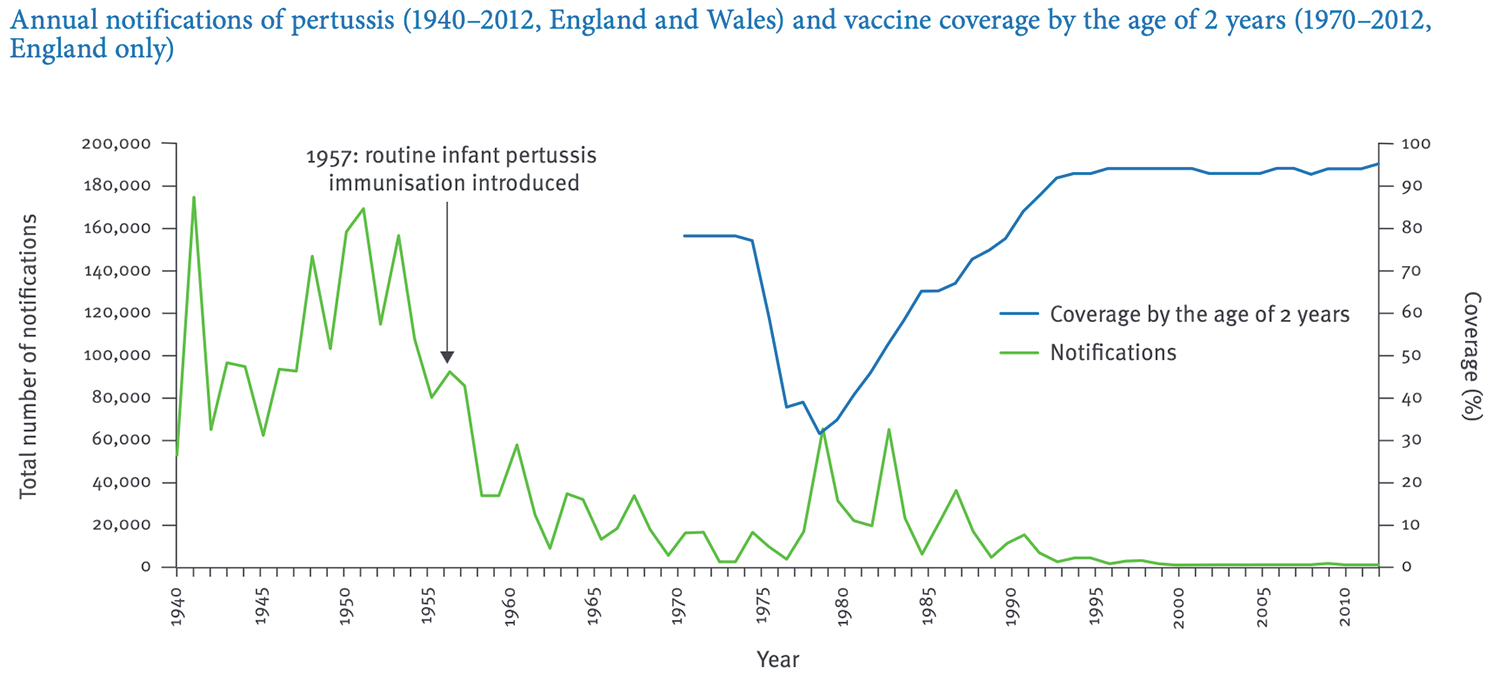
References (click to open)
- Alderson M., International Mortality Statistics, Facts on File, Washington, DC, 1981, pp. 164-165.
- Halperin et al. "Persistence of pertussis in an immunized population: results of the Nova Scotia enhanced pertussis surveillance program". Journal of Pediatrics, November 1989, pp. 686-693.
- Pichichero ME et al. , "Diphtheria-Pertussis Tetanus vaccine: reactogenicity of commercial products", Pediatrics. February 1979, p. 256-260.
- Lambert H., "Epidemiology of a small pertussis outbreak in Kent County, Michigan'', Pub. Health Report, 1965, 80, pp. 365-369.
- Edelman K et al., "Immunity to pertussis 5 years after booster immunization during adolescence", Clinical Infectious Diseases, 15 May 2007, 44, pp. 1271-1277.
- Christie DC et al., The 1993 epidemie of pertussis in Cincinnati: resurgence of disease in a highly immunized population of children, NEJM, 7 July 1994, pp. 16-20.
- Ewanowich CA et al., "Major outbreak. of pertussis in Northern Alberta, Canada", Journal of Clinical IN Microbiology, July 1993, pp. 171S-1725.
- CDC, Pertussis outbreak-Vermont, 1996", MMWR, pp. 822-826.
- DeMellier HE et al., "Reemergence of pertussis in the highly vaccinated population of the Netherlands: observations on surveillance data", Emerging Infectious Diseases, July-August 2000, 6 (4), pp. 348-357.
- Theodoridou Metal., "Pertussis outbreak detected by active surveillance in Cyprus in 2003", Euro Surveillance, May 2007, 12
- Moerman L. et al., "The re-emergence of pertussis in Israel", Israel Vaccine Research Initiative, May 2006, pp. 308-311.
- unboundmedicine.com/medline/citation/6380211/Bordetella_pertussis_whole_cell_vaccines_efficacy_and_toxicity
- http://pediatrics.aappublications.org/content/early/2016/02/03/peds.2015-3326
- https://www.sciencedirect.com/science/article/abs/pii/S0140673682922140
- ncbi.nlm.nih.gov/pmc/articles/PMC3994516/
- ncbi.nlm.nih.gov/pmc/articles/PMC3414039/
- https://pubmed.ncbi.nlm.nih.gov/26103968/
- https://pubmed.ncbi.nlm.nih.gov/29180031/

